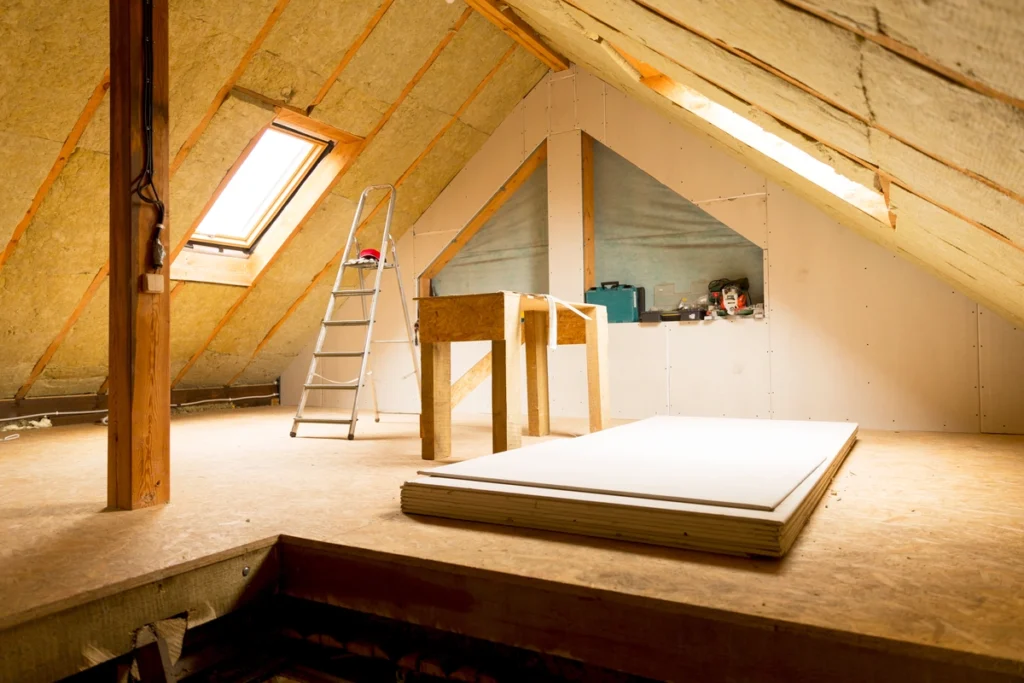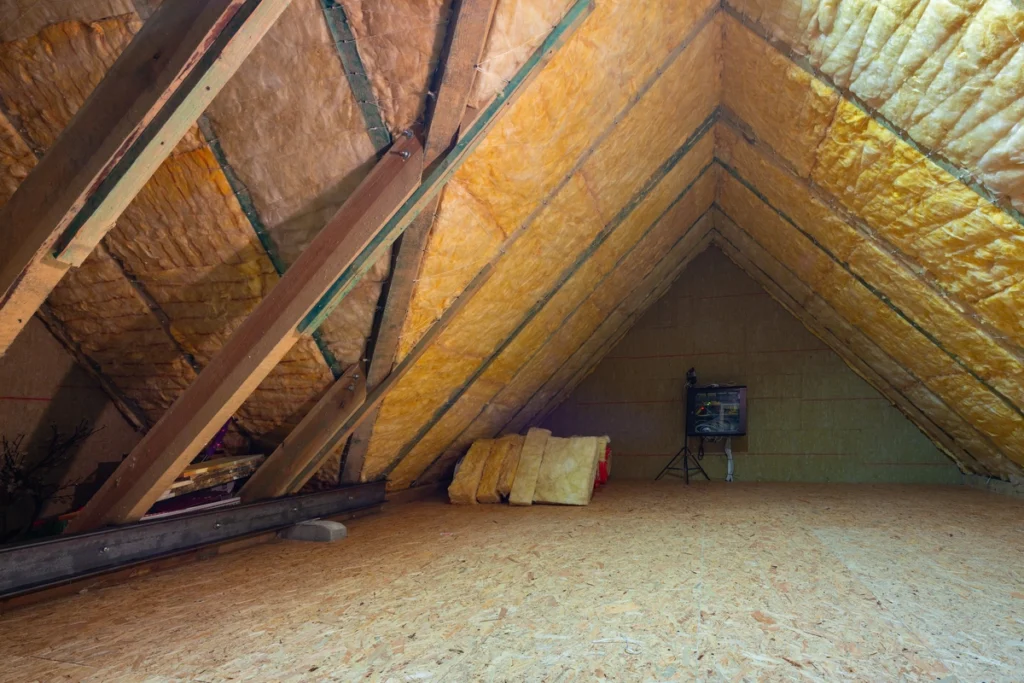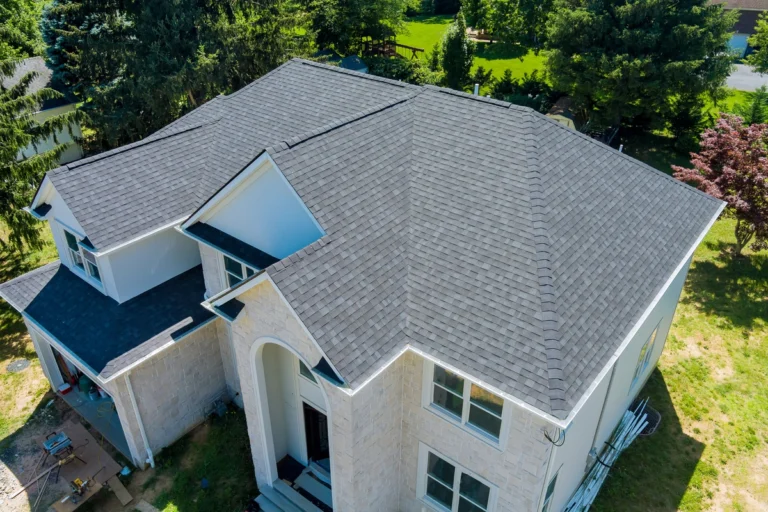
Are you looking to make your home more energy-efficient and comfortable year-round? Choosing the right insulation for your attic is one of the smartest investments a homeowner can make. Attic insulation not only keeps your home warmer in the winter and cooler in the summer, but it can also reduce energy bills and prolong the life of your roof by minimizing heat stress.
This guide will walk you through everything you need to know about attic insulation, including:
- Why attic insulation matters for homeowners
- The best types of insulation for the attic
- Key factors to consider when choosing insulation
🤔 Why Attic Insulation Matters for Homeowners

Your attic plays a significant role in your home’s overall comfort and energy efficiency. Without proper insulation, your home can lose up to 25% of its heat through the roof in the winter and become uncomfortably hot in the summer as heat enters unprotected spaces. Proper attic insulation minimizes these issues, offering multiple benefits, including:
- Energy savings: Well-insulated attics reduce heating and cooling costs by preventing temperature fluctuations.
- Improved comfort: Even temperatures throughout your home, no hot or cold spots.
- Roof longevity: Reducing heat buildup in the attic decreases the risk of roof damage from extreme temperatures.
- Environmental impact: Use less energy and reduce your carbon footprint.
⭐️ 5 Best Types of Insulation for Attic

Not all attic insulation is created equal. Depending on your climate, budget, and attic design, choosing the right type of insulation can make all the difference. Here are the best options, ranked for efficiency and practicality:
1. Fiberglass Batt Insulation
Fiberglass batt insulation is a traditional and budget-friendly option made from fine, woven glass fibers. It typically comes in pre-cut batts or rolls, making it easy to install, especially in unfinished attics. Homeowners can benefit from its affordability and widespread availability. Fiberglass insulation offers good thermal resistance, also known as an R-value, which helps maintain a consistent indoor temperature. Additionally, it is non-combustible and resistant to moisture, adding extra safety and durability to your home. This option is best suited for homeowners on a budget who are looking to insulate between attic joists effectively.
2. Blown-In (Loose-Fill) Insulation
Blown-in or loose-fill insulation is a versatile option available in either fiberglass or cellulose. This type of insulation is ideal for filling small gaps and hard-to-reach areas in attics. It is applied using a specialized blowing machine, ensuring even and thorough coverage throughout the space. Blown-in insulation works well in uneven or oddly-shaped attic spaces where traditional insulation batts may not fit. With its high R-value, it provides excellent thermal performance to keep your home energy-efficient. Eco-conscious homeowners may also appreciate the cellulose option, which is made from recycled materials, making it an environmentally friendly choice. This insulation type is best for adding a thick, uniform layer of coverage to maximize insulation efficiency.
3. Spray Foam Insulation
Spray foam insulation is one of the most advanced and effective insulation options available. It expands to fill cracks and crevices, creating an airtight seal that helps prevent drafts and enhances energy efficiency. Spray foam comes in two types: open-cell and closed-cell foam, each designed to meet specific attic needs. In addition to providing superior air sealing, spray foam adds structural stability to your attic, making it both a durable and functional choice. It is also resistant to mold and pests, contributing to a healthier indoor environment. This insulation option is particularly well-suited for homes located in extreme climates or areas prone to high levels of humidity, offering reliable temperature control and moisture resistance.
4. Radiant Barrier Insulation
Radiant barrier insulation is a unique option that works differently from traditional insulation. Instead of trapping heat, radiant barriers reflect it, making them an excellent choice for homes in warmer climates. They are typically installed on the underside of the attic, directly below the roof, to reflect radiant heat from the sun. By reducing the amount of heat that enters the home, radiant barriers can significantly lower cooling costs during hot summers. This type of insulation is thin, lightweight, and easy to work with, adding convenience to its many benefits. Radiant barrier insulation is best for homes in regions with intense sunlight and frequent hot weather, ensuring a cooler and more energy-efficient living space.
5. Mineral Wool Insulation
Mineral wool insulation, also known as rock wool insulation, is another reliable option for attic spaces. It is made from volcanic rock or industrial byproducts, making it both eco-friendly and highly durable. One of its standout features is its excellent fireproofing properties, providing an added layer of safety to your home. Mineral wool is also resistant to mold and mildew, making it a practical choice for areas with high humidity. Its high-density material offers superior soundproofing, which can be particularly useful for attics used as living spaces or home offices. Mineral wool insulation is best for homeowners looking to enhance fire resistance and soundproofing in their attics while choosing a durable and sustainable material.
👉 Key Factors to Consider When Choosing Insulation

To get the most out of your insulation investment, keep the following factors in mind:
1. R-Value
The R-value is a crucial factor in determining how effective insulation is at resisting heat flow. In simple terms, the higher the R-value, the better the insulation will be at keeping your home comfortable by preventing heat from escaping in the winter and entering in the summer. For attics, an R-value between R-30 and R-60 is generally recommended, though the exact number depends on your climate zone. For example, colder climates may require insulation closer to R-60 for maximum efficiency, while milder areas might only need R-30. Choosing the proper R-value ensures your home remains energy-efficient, saving you money on heating and cooling bills.
2. Climate
Climate plays a significant role in determining the best insulation for your attic. In colder regions, homes require insulation with higher R-values to trap heat effectively and prevent energy loss during harsh winters. In warmer climates, the focus shifts to keeping heat out, which makes reflective barriers or materials with lower R-values better suited for the job. Understanding your specific climate needs is essential when selecting insulation, as it ensures your home stays comfortable year-round while reducing energy costs and maximizing efficiency.
3. Design of Your Attic
The layout and design of your attic heavily influence the type of insulation you should use. If your attic is finished and used as a living space, materials like spray foam or mineral wool are ideal because they fit snugly into tight spaces and provide optimal thermal protection. Spray foam, in particular, expands to fill gaps and creates an airtight seal, which is especially useful for irregularly shaped attics. On the other hand, if your attic is unfinished and primarily used for storage, blown-in insulation or batt insulation works best. These materials are more affordable and effective at covering large, open areas evenly, ensuring proper insulation throughout the space.
4. Budget
Your budget is another critical consideration when choosing attic insulation. Blown-in insulation and fiberglass batts are often the most cost-effective options for homeowners, providing good thermal protection at a relatively low price. However, if you’re looking for long-term energy savings, investing in spray foam insulation can be a wise choice. Although it comes with a higher upfront cost, spray foam offers superior performance by creating an airtight seal, reducing energy loss more effectively than other materials. Balancing your budget with your energy efficiency goals is key to making the right decision.
5. DIY vs. Professional Installation
Deciding between a DIY approach or hiring a professional is an important step in the insulation process. Some types of insulation, like fiberglass batts, are relatively easy to install and can be a great option for those comfortable with home improvement projects. However, proper insulation installation requires precision to ensure there are no gaps or areas of ineffective coverage. Professional installation is especially beneficial for more complex insulation types, such as spray foam or blown-in insulation. While it may cost more upfront, hiring an expert ensures the job is done correctly, resulting in better performance, durability, and long-term energy savings.
🏠 Attic Insualtion Guide
Choosing the right team for your attic insulation is just as important as choosing the right materials. At Kraft Roofing, we combine years of experience, expert craftsmanship, and a commitment to energy efficiency to ensure your home stays comfortable and cost-effective year-round.
Our tailored solutions and attention to detail set us apart, making us the team you can trust with your insulation and roofing needs. Ready to transform your home? Contact us today for a free consultation and let Kraft Roofing help you achieve the comfort and savings you deserve!



